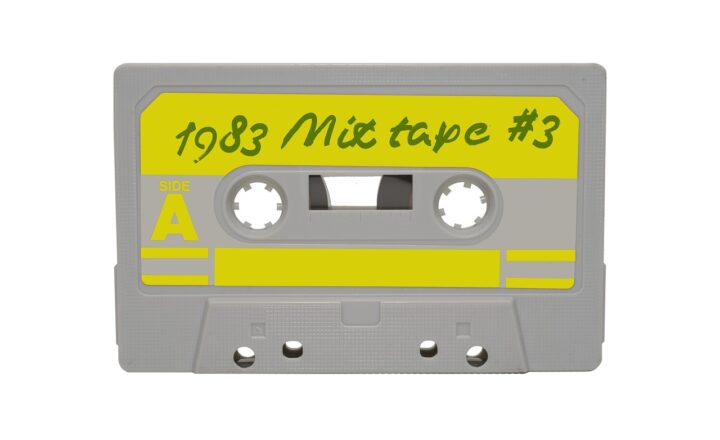Why Kilometers and Miles Coexist and How They Shape Our Worldviews
November 12, 2024

In a world that’s increasingly interconnected, the units we use to measure distance can influence everything from how we navigate our surroundings to how we perceive geographical space. Among these units, kilometers and miles stand out as the two most widely recognized measurements of distance around the globe, each with its unique history, application, and cultural significance. This article delves into the intriguing reasons behind the coexistence of kilometers and miles and explores how these units shape our worldview.
1. The Origins of Kilometers and Miles
Understanding the coexistence of kilometers and miles requires a look back at their origins.
– Miles: The mile has its roots in ancient Roman measurements. Derived from the Latin phrase mille passus, meaning “a thousand paces,” the Roman mile measured about 1,000 paces of a soldier. This standard measurement was later adopted in various forms across different cultures. The mile eventually made its way to England, where it was standardized to 1,609.34 meters in 1959, but it remained strongly embedded in British and American cultures.
– Kilometers: In contrast, the kilometer emerged from the metric system, which was developed in France in the late 18th century. The metric system promoted a base-10 approach to measurement, facilitating conversions and calculations. The kilometer, equal to 1,000 meters, was meant to simplify the measurement process. It gained significant traction as countries around the world adopted the metric system, making it the standard for most nations today.
The evolution from ancient paces to modern measurements highlights the adaptability of human society in response to the needs of communication and commerce.
2. Global Adoption and the Metric System
The metric system was designed to establish a universal standard for measurement, making conversions and calculations easier across different fields, from science to trade. Currently, 95% of the world’s countries use the metric system, thereby adopting the kilometer as their primary unit of distance.
However, there are notable exceptions: the United States, Myanmar, and Liberia still heavily use the imperial system, which includes the mile as its standard unit of distance. This results from historical precedence and cultural inertia, which can make shifting to a new system challenging.
The continuation of kilometers in most countries and miles in the remaining few creates a fascinating blend of measurements that coexist and influence international relations, travel experiences, and trade.
– Cultural Significance: The choice of measurement not only reflects practicality but also political and cultural identity. For nations like the U.S., retaining the mile is tied to the preservation of a unique national identity, while countries following the metric system assert a globalized standard.
3. Coexistence in Daily Life
In our daily lives, the interaction between kilometers and miles is more than just a measurement; it represents how we engage with the world. Consider these examples:
– Travel: When traveling internationally, one must often convert distances between kilometers and miles. This conversion becomes essential in contexts like road trips, when a tourist in a kilometers-only nation might misjudge travel times if they stick to mile-oriented navigation tools.
– Sports: In athletics, distances are frequently measured in both kilometers and miles. Marathons are noted in miles in some countries, while others use kilometers for shorter races. This duality can shape how athletes train, how events are marketed, and even how spectators engage.
– Public Transportation: Cities often provide distance information in the unit preferred by the majority of transit users. For instance, New York City might offer distances in miles, whereas Tokyo predominantly uses kilometers.
The necessity of converting these distances unifies travelers, sports enthusiasts, and commuters across diverse landscapes and cultures, demonstrating the flexibility inferred from using both measurements.
4. The Psychology of Measurement
Cultural perceptions of distance can affect how individuals engage with their environment. People accustomed to miles often find distance to be more abstract than those who use kilometers, where larger metrics—like kilometers—provide a more public-facing measurement that can ignite a psychological connection to distance and travel.
– Perception of Distance: Studies suggest that cultures that use kilometers perceive distances as less intimidating than those that use miles. The difference in scaling can create feelings of either comfort or discomfort for travelers and navigators, influencing their choices.
– Cognitive Frameworks: The duality in measurement informs how we categorize spatial information. For example, a five-mile journey may seem more daunting to someone accustomed to kilometers because it crosses the threshold of moderate distance differently based on local standards.
Understanding the psychological element behind how we perceive distance could lead us to reassess not only our travel habits but also our cultural comfort zones.
5. Conversions: An Opportunity for Growth
In a world with interconnected travel, education, and commerce, understanding how to convert kilometers and miles becomes essential for effective communication. The formula for converting kilometers to miles (1 km = 0.621371 miles) is foundational for navigators and travelers alike. Here’s a quick reference for conversions:
– Kilometers to Miles: km × 0.621371 = miles
– Miles to Kilometers: miles × 1.60934 = kilometers
Grasping mathematical conversions not only prepares us for traveling in unfamiliar territories but also cultivates an appreciation for the fluidity of distance as a concept. Moreover, educational institutions and travel agencies ought to emphasize money-saving strategies and tools to encourage better understanding and adaptability between the two systems.
6. The Future of Distance Measurement
As technology continues to bridge cultural and geographical divides, the future may yield changes in how we measure distances. Globalization may encourage countries that still use miles to explore the metric system further, given its advantages in scientific applications and international trade.
– Technological Innovations: Applications and devices capable of auto-converting kilometers and miles can lessen confusion among users and prioritize metrics based on location. This development could facilitate better communication and improve trips for travelers who frequently encounter both systems.
– Educational Integration: Global education programs can enhance familiarity and ultimately common language across distance measurement units. As students learn more about international systems, they may gradually adopt and normalize the kilometer as a universal measure of distance.
The dynamic nature of how we engage with distances can predict exciting changes in cultural acceptance and practices concerning both kilometers and miles.
Conclusion
The coexistence of kilometers and miles transcends mere measurement; it reflects historical context, cultural identity, and psychological perceptions. Understanding the reasons and implications of our measurement choices enables us to navigate a world rich in diversity, adapting our perspectives and experiences as we traverse the globe. The next time you encounter a distance in kilometers or miles, remember that these units are more than numbers; they are gateways to understanding and sharing our world.
By embracing both systems, we cultivate a broader worldview, allowing us to appreciate the nuances of distance and the myriad ways in which it connects us to our environment and each other.







